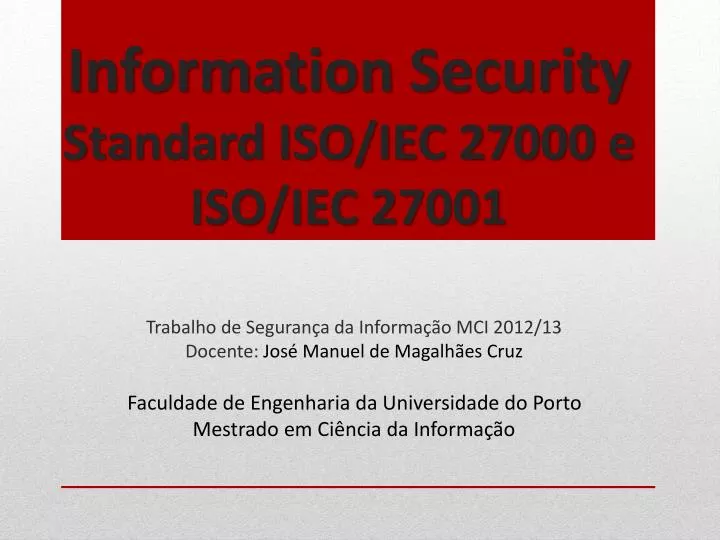

Iso 27000 download iso#
ISO 27000-series information security standards.Center for Internet Security Controls or.FedRAMP Security Assessment Framework, which applies generally to cloud-based services.NIST Special Publications 800-53 and 800-53a.NIST Special Publication 800-171, which governs controlled unclassified information.The National Institute of Standards and Technology (NIST) Cybersecurity Framework.

To benefit from Connecticut’s new law, businesses must conform to the current version of one or more of the following frameworks: Secretary of Health and Human Services) must consider compliance with certain cybersecurity standards as a mitigating factor when calculating potential penalties for HIPAA violations. The new Connecticut and Utah laws also follow in the footsteps of a recent federal amendment impacting enforcement under the Health Insurance Portability and Accountability Act (HIPAA), which states that the relevant federal regulator (the U.S. Although the cybersecurity frameworks identified in Connecticut, Ohio, and Utah are nearly identical, the relief available varies: In Connecticut, businesses with qualifying cybersecurity programs can avoid only punitive damages in Ohio and Utah, businesses with such programs can avail themselves of broad affirmative defenses to causes of action including failure to implement reasonable cybersecurity controls, failure to appropriately respond to a data breach, and failure to appropriately notify individuals of compromised personal information. This “incentivizing” Act is similar to the Ohio Data Protection Act (effective November 2018) and the Utah Cybersecurity Affirmative Defenses Act (effective May 2021), which offer protections for businesses with specified cybersecurity programs. This protection does not apply where “such failure to implement reasonable controls was the result of gross negligence or wilful or wanton conduct.” To benefit from the law, the business must have adopted one of six named industry frameworks (plus a seventh where payment card information is involved) or conform with the requirements of one of three federal legal frameworks. The Connecticut law, An Act Incentivizing the Adoption of Cybersecurity Standards for Businesses, creates a “safe harbor” from punitive damages for businesses in tort cases where a data breach stemmed from an alleged failure to implement reasonable cybersecurity controls. Investigations, White Collar, and Fraud.Litigation, Arbitration, and Employment.Trade Secrets and Confidential Know-how.Pharmaceuticals and Biotechnology Regulatory.Medical Device and Technology Regulatory.Government Relations and Public Affairs.Government Contracts and Public Procurement.Private Equity, Venture Capital and Investment Funds.Corporate Governance and Public Company Representation.Moreover, organizations can achieve external, accredited certification to the Standard – an excellent way of demonstrating at least partial compliance with NIST’s frameworks. ISO 27001, meanwhile, has an international presence that many organizations recognize and trust. This is particularly unfortunate for organizations that must comply (as mandated by President Trump’s Executive Order 13800). There is no formal NIST certification (yet). However, because the CSF and RMF were designed to be voluntary, it is difficult to prove compliance. In fact, the risk assessment process specified by ISO 27001 takes a very similar approach to the RMF: identify risks to the organization’s information, implement controls appropriate to the risk, and finally, monitor their performance. The fact that they are flexible makes it relatively easy to implement them in conjunction with ISO 27001, particularly as they have a number of common principles, including requiring senior management support, a continual improvement process, and a risk-based approach. The NIST frameworks were designed as flexible, voluntary frameworks. How do ISO 27001 and NIST CSF complement each other?


 0 kommentar(er)
0 kommentar(er)
